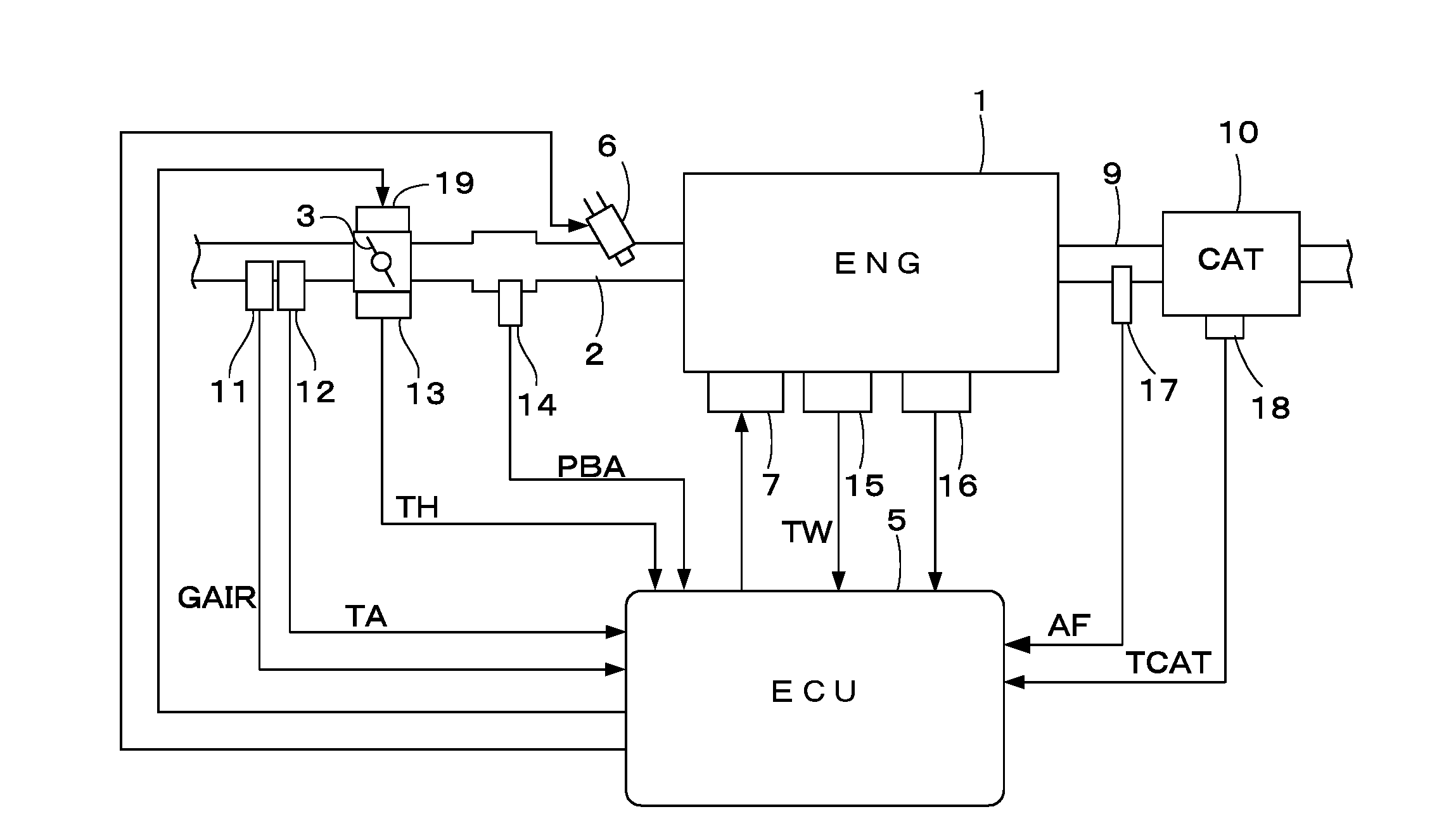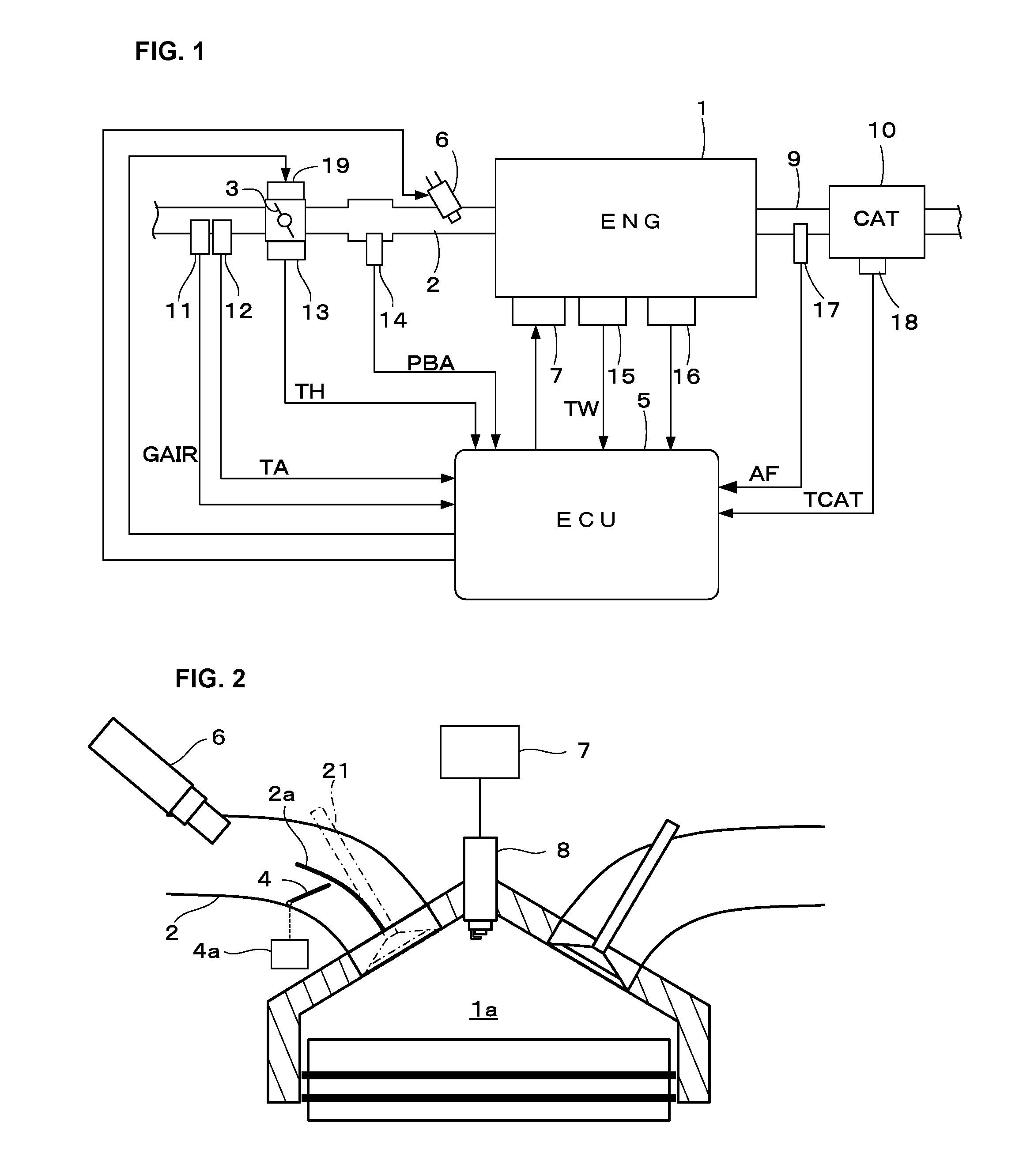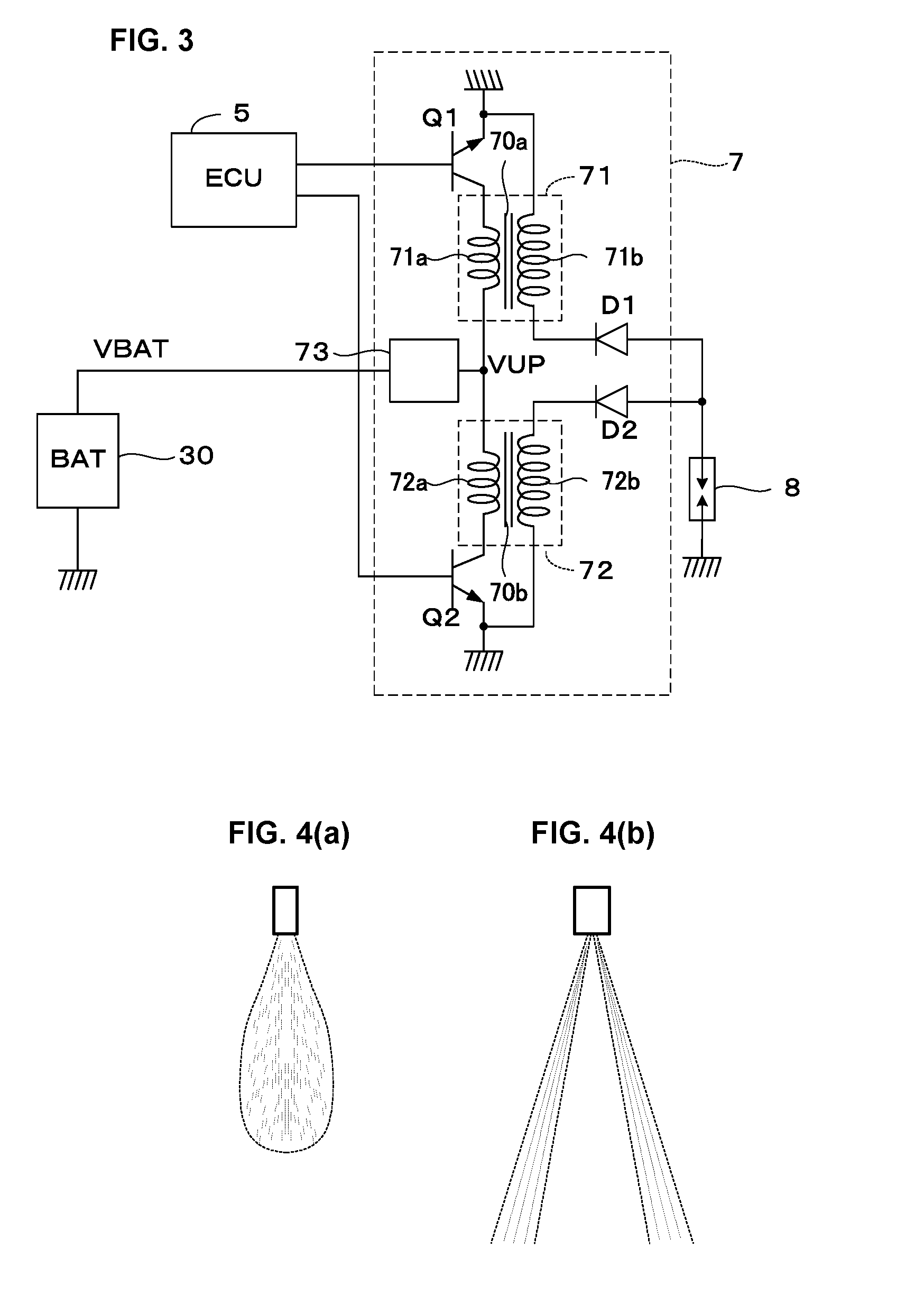Combustion control apparatus for internal combustion engine
a combustion control and internal combustion engine technology, applied in the direction of electric control, ignition automatic control, machines/engines, etc., can solve the problems of generating a large amount of nox and the inability to remove the nox contained in the exhaust gases, so as to reduce the air-fuel ratio. , the effect of reducing the air-fuel ratio
- Summary
- Abstract
- Description
- Claims
- Application Information
AI Technical Summary
Benefits of technology
Problems solved by technology
Method used
Image
Examples
Embodiment Construction
[0040]Preferred embodiments of the present invention will now be described with reference to the drawings.
[0041]FIG. 1 shows a configuration of an internal combustion engine (hereinafter referred to as “engine”) and a control apparatus therefor according to one embodiment of the present invention. An intake passage 2 of the engine 1 having, for example, four cylinders is provided with a throttle valve 3. A fuel injection valve 6 is provided, corresponding to each cylinder, downstream of the throttle valve 3 in the intake passage 2. Operation of the fuel injection valve 6 is controlled by an electronic control unit (hereinafter referred to as “ECU”) 5.
[0042]As shown in FIG. 2, the intake passage 2 is provided with a partition wall 2a and a tumble flow control valve 4 which is disposed in one of the passages defined by the partition wall 2a. The tumble flow control valve 4 is configured so as to be opened and closed by an actuator 4a. The actuator 4a is connected to the ECU 5, and its...
PUM
 Login to View More
Login to View More Abstract
Description
Claims
Application Information
 Login to View More
Login to View More - R&D
- Intellectual Property
- Life Sciences
- Materials
- Tech Scout
- Unparalleled Data Quality
- Higher Quality Content
- 60% Fewer Hallucinations
Browse by: Latest US Patents, China's latest patents, Technical Efficacy Thesaurus, Application Domain, Technology Topic, Popular Technical Reports.
© 2025 PatSnap. All rights reserved.Legal|Privacy policy|Modern Slavery Act Transparency Statement|Sitemap|About US| Contact US: help@patsnap.com



